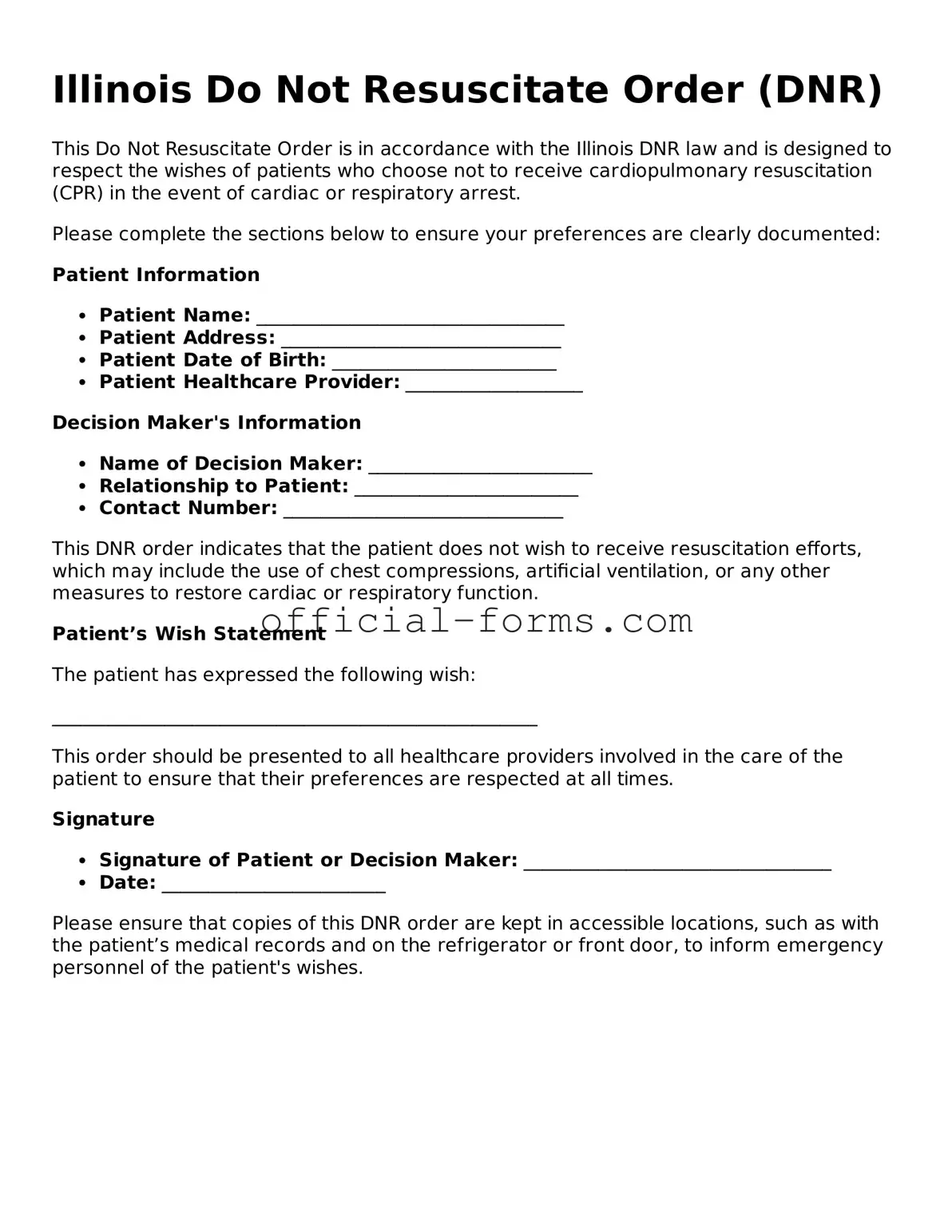Filling out the Illinois Do Not Resuscitate (DNR) Order form can be a daunting task, and many individuals make common mistakes that can lead to confusion or unintended consequences. One frequent error is failing to properly identify the patient. It’s crucial to include the full name, date of birth, and any other identifying information. Omitting these details can result in the DNR order not being honored in an emergency situation.
Another common mistake is not having the form signed by the appropriate parties. In Illinois, the DNR Order must be signed by a physician, and sometimes individuals overlook this requirement. Without a physician's signature, the document lacks legal standing. Additionally, patients or their representatives may forget to date the form, which can raise questions about its validity.
Many people also neglect to discuss their wishes with family members or healthcare providers before completing the form. This lack of communication can lead to misunderstandings and may result in family members acting against the patient’s wishes during a critical moment. Engaging in open discussions ensures that everyone involved understands the patient's preferences and can advocate for them effectively.
Some individuals mistakenly believe that the DNR Order is a one-time document that doesn’t need to be revisited. In reality, a patient’s health status or wishes may change over time. Regularly reviewing and updating the DNR Order is essential to ensure it accurately reflects the patient’s current desires regarding resuscitation.
Another issue arises when individuals fail to keep copies of the completed DNR Order. It’s important to distribute copies to relevant parties, such as family members, healthcare providers, and hospitals. Without accessible copies, the DNR Order may not be recognized when it is needed most.
Lastly, some people misunderstand the scope of the DNR Order. They might assume it applies to all medical situations, but it specifically pertains to resuscitation efforts. Patients should clarify their wishes regarding other types of medical interventions, such as pain management or comfort care. This comprehensive understanding can help prevent conflicts and ensure that the patient’s overall care aligns with their preferences.
